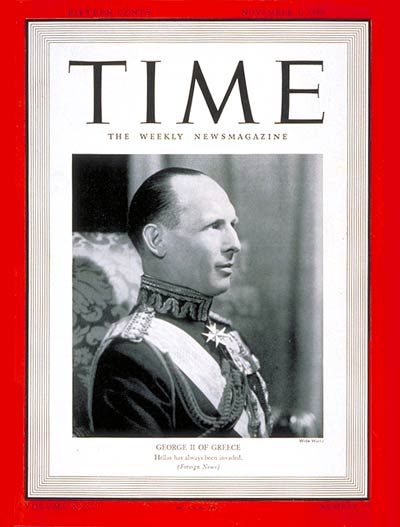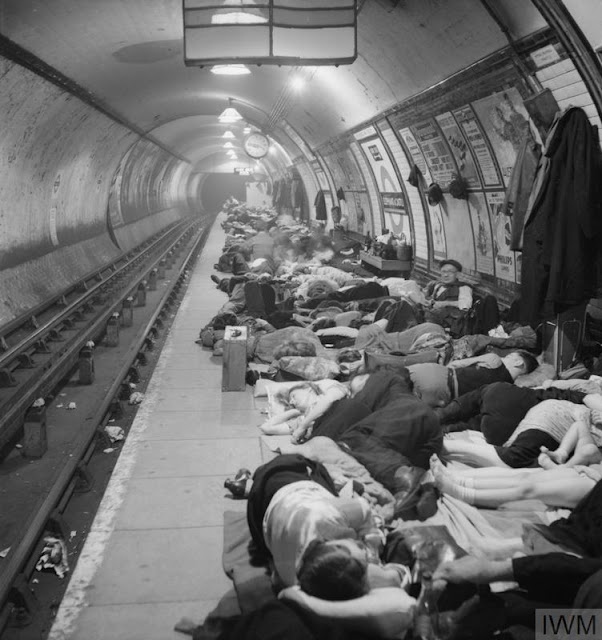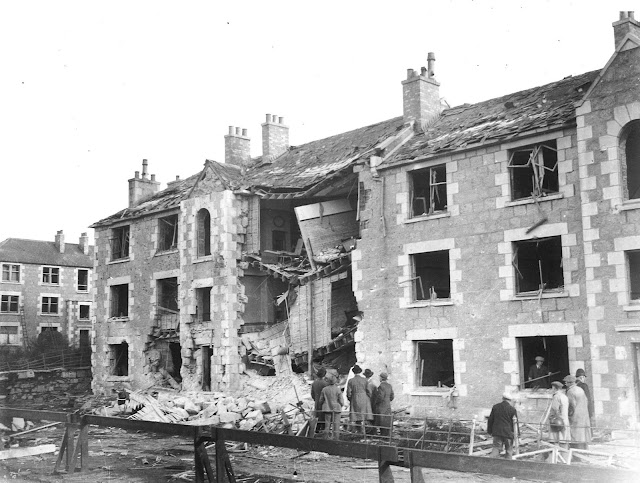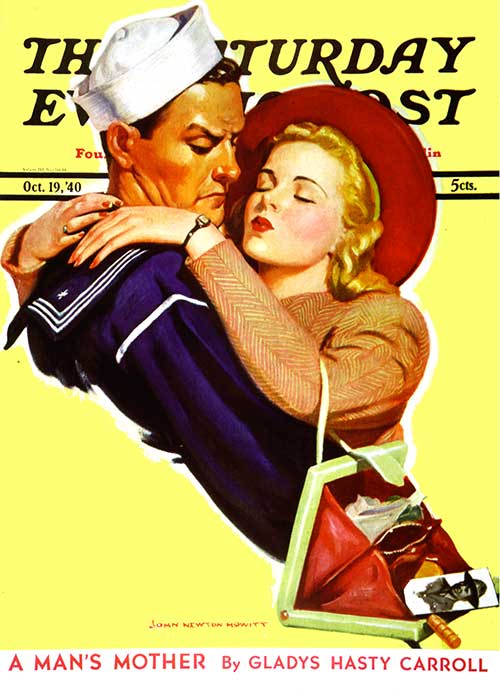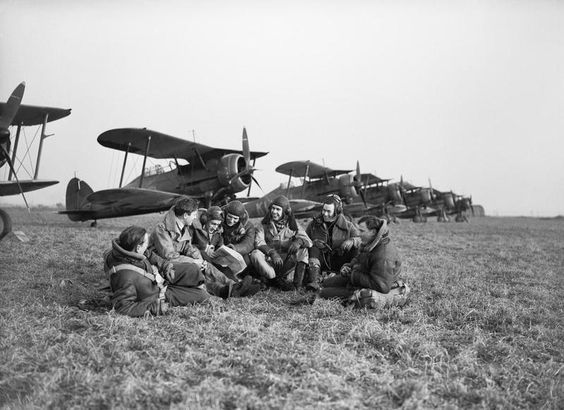Wednesday 31 December 1941
 |
| Admiral Nimitz assumes command of the Pacific Fleet aboard USS Grayback on 31 December 1941 (U.S. Naval Historical Center Photograph). |
Just to summarize the U.S. Navy command chain during December 1941: Nimitz had nothing to do with operational orders at Pearl Harbor until he took over the fleet on 31 December 1941. Admiral Husband E. Kimmel was in charge in Hawaii and, well, everywhere during the attack (CINCPACFLT and CINCUS). Nimitz actually took over as CINCPACFLT not from Kimmel but from Admiral William S. Pye (CINCLANT Admiral Ernest King became COMINCH on 30 December 1941). Pye was an interim replacement for Kimmel after Kimmel was sacked on 17 December 1941 so he could go back to Washington and explain what happened (among other obvious reasons). It's kind of confusing with all the acronyms, but, basically, the Atlantic Fleet commander King replaced Kimmel as overall Navy commander and Nimitz took over for Kimmel just in the Pacific.
 |
| Admiral Nimitz back at his desk shortly after assuming command of the US Navy Pacific Fleet, 31 December 1941 (Naval History and Heritage Command Photograph Collection, NH 62027). |
 |
| "Derna, Cyrenaica, Libya. 31 December 1941. A line of Axis bombs reserved for the Allied forces in Libya which will never fulfill their purpose is inspected by a member of Allied aircrew. Enormous quantities of ammunition and supplies have been captured by the advancing armies." Australian War Memorial MED0239. |
 |
| U-74 returns to port at Lorient, France, on 31 December 1941, cheered on by sailors on a passing ship (Chandler, Federal Archive Picture 101II-MW-4258-36A). |
 |
| Japanese bicycle-mounted troops on Luzon, December 1941 (US Army Center of Military History). |
 |
| "Malayan Campaign, December 1941-January 1942. Brewster Buffalo fighters over the Malaya coasts. Courtesy of the Library of Congress." National Museum of the U.S. Navy. |
In Borneo, Lieutenant Colonel Genzo Watanabe of the 2nd Yokosuka Naval Landing Force takes his troops northward to occupy Brunei, Labuan Island, and Jesselton (now called Kota Kinabalu). Allied troops are now on the run throughout Borneo and have fallen back into the jungles of the interior.
 |
| "Western Desert, North Africa. c. 31 December 1941. One of the deadly Bristol Beaufighter aircraft, serial no. T3316, operating on the battlefront. Since the British Army offensive commenced three days ago, these heavily armed fighters have destroyed nearly thirty enemy aircraft." Australian War Memorial MED0022. |
The Fuehrer has categorically forbidden any retrograde movements to the Koenigsburg Position. Only local evasive movements under direct enemy pressure will be allowed. All reserves are to be sent to the front, and [the troops] are ordered to hold every locality and support point.Thus, the die is cast: either the German troops will defend where they stand, or they will not, but they won't be welcomed at any point further west.
 |
| U-74 (Kapitänleutnant Eitel-Friedrich Kentrat) returns to port at Lorient, France on 31 December 1941 (Kramer, Federal Archive Bild 101II-MW-4258-33A). |
 |
| "Onboard HMS AJAX, looking forward, as rounds from her six-inch guns are fired into Bardia. Libya" 31 December 1941 (© IWM (A 8038)). |
They are fighting with the greatest vigor and on quite a large scale, and we don't hear very much of what is going on there. It is all very terrible. Guerilla warfare and the most frightful atrocities by the Germans and Italians, and every kind of torture, but the people keep the flag flying.The partisan movement in Yugoslavia, of course, is exactly what Churchill says it is. However, it is a lot more complex than that. Royalist forces and communist forces have an uneasy alliance that could fracture at any moment. However, there is no question that the partisans are causing the Italian and German occupiers endless troubles.
 |
| "A big gun on Corregidor replies to the invaders." ca. 31 December 1941. |
American Homefront: The U.S. government has banned the use of chrome in private automobile production, so today is its last use by the major car manufacturers for quite some time. Tire purchases already have been restricted. Overall, private automobile production virtually disappears in the coming weeks and months as plants are converted to war production. Car production is replaced by vast quantities of military vehicles such as jeeps and staff cars, some of which can be used eventually by private citizens and also lead to civilian models.
December 1941
December 1, 1941: Hitler Fires von Rundstedt
December 2, 1941: Climb Mount Niitaka
December 3, 1941: Hints of Trouble in the Pacific
December 4, 1941: Soviets Plan Counteroffensive
December 5, 1941: Soviets Counterattack at Kalinin
December 6, 1941: Soviet Counterattack at Moscow Broadens
December 7, 1941: Japan Attacks Pearl Harbor
December 8, 1941: US Enters World War II
December 9, 1941: German Retreat At Moscow
December 10, 1941: HMS Prince of Wales and Repulse Sunk
December 11, 1941: Hitler Declares War on US
December 12, 1941: Japanese in Burma
December 13, 1941: Battle of Cape Bon
December 14, 1941: Hitler Forbids Withdrawals
December 15, 1941: The Liepaja Massacre
December 16, 1941: Japan Invades Borneo
December 17, 1941: US Military Shakeup
December 18, 1941: Hitler Lays Down the Law
December 19, 1941: Brauchitsch Goes Home
December 20, 1941: Flying Tigers in Action
December 21, 1941: The Bogdanovka Massacre
December 22, 1941: Major Japanese Landings North of Manila
December 23, 1941: Wake Island Falls to Japan
December 24, 1941: Atrocities in Hong Kong
December 25, 1941: Japan Takes Hong Kong
December 26, 1941: Soviets Land in the Crimea
December 27, 1941: Commandos Raid Norway
December 28, 1941: Operation Anthropoid Begins
December 29, 1941: Soviet Landings at Feodosia
December 30, 1941: Race for Bataan
December 31, 1941: Nimitz in Charge
1942
January 1942
January 1, 1942: Declaration By United Nations
January 2, 1941: Manila Falls to Japan
January 3, 1942: ABDA Command Announced
January 4, 1942: MacArthur on His Own in the Philippines
January 5, 1942: Soviets Plan General Offensive
January 6, 1942: US Army in Europe
January 7, 1942: Soviet General Offensive Opens
January 8, 1942: Hitler Sacks Hoepner
January 9, 1942: Battle of Dražgoše
January 10, 1942: Building the Jeep
January 11, 1942: Japan Takes Kuala Lumpur
January 12, 1941: Rommel Plans Counterattack
January 13, 1942: First Ejection Seat Use
January 14, 1942: Operation Drumbeat First Sinking
January 15, 1942: U-Boat Off NYC
January 16, 1942: Carole Lombard Crash
January 17, 1942: British Take Halfaya Pass
January 18, 1942: Soviet Paratroopers in Action
January 19, 1942: FDR Approves Atomic Bomb
January 20, 1942: The Wannsee Conference
January 21, 1942: Parit Sulong Bridge Battle
January 22, 1942: Parit Sulong Massacre
January 23, 1942: Japan Takes Rabaul
January 24, 1942: Battle of Makassar Strait
January 25, 1942: Kholm Surrounded
January 26, 1942: GIs Land in Europe
January 27, 1942: Battle of Endau
January 28, 1942: Rommel Takes Benghazi
January 29, 1942: First US Coast Guard Ship Sunk
January 30, 1942: Singapore Isolated
January 31, 1942: Army Group South Averts Disaster
2020





